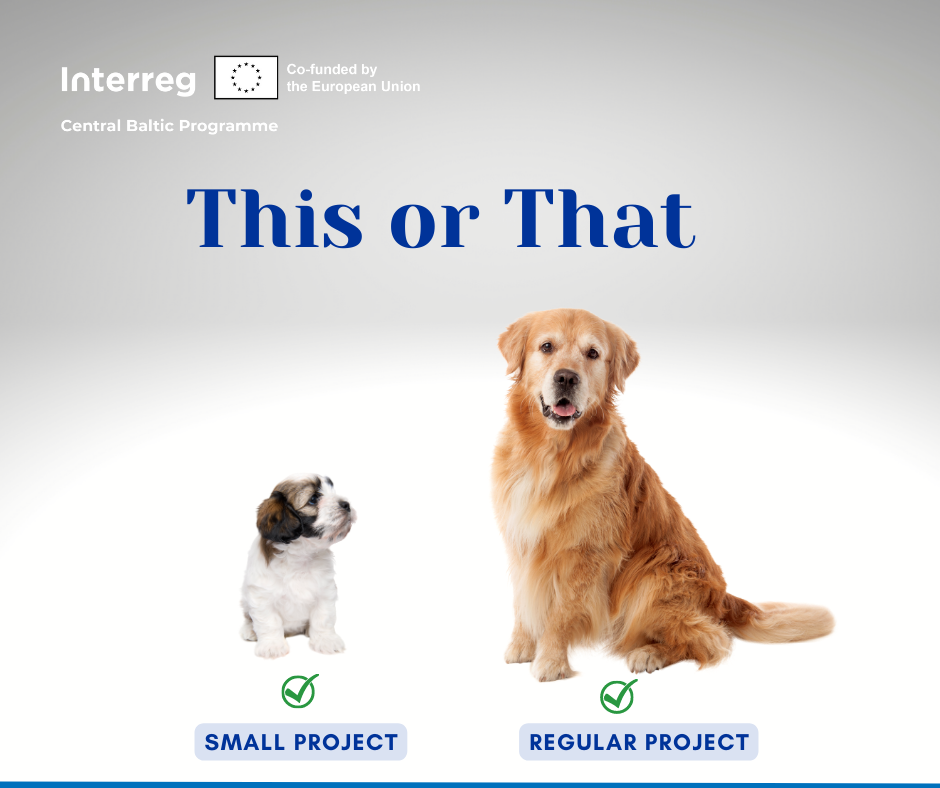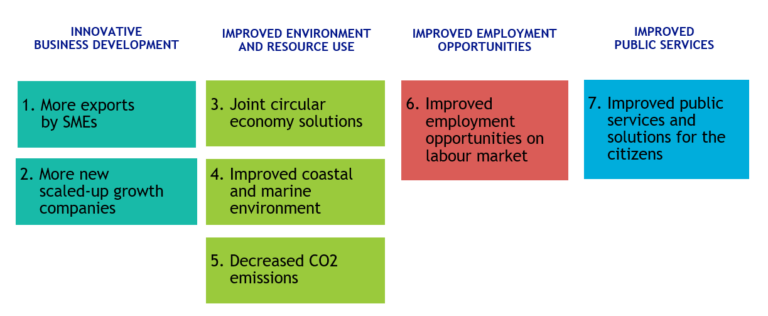Which one to choose:
a small or a regular project?
If you have an idea for a cross-border project, what type of project will you develop? Is it a small or a regular project? Identifying your project’s type is one of the most important questions to ask yourself at the beginning, as it will determine the expected duration, budget, and eligibility for costs. To give you a hand, we are explaining below what makes a small and a regular project.
Small projects:
smart, short and simple
The choice of project type depends on the purpose and scope of your idea but there are good reasons to apply for a small project funding. In a nutshell, small projects are smart, short, and simple.
Smart – a small project requires fewer resources but still allows you to develop innovative solutions, especially on the grass-root level.
The Programme specifically encourages developing a small project proposal for two Programme Objectives as their expected results are likely to be achieved with the approach of small projects:
- Improved Employment Opportunities on Labour Market (6) and
- Improved Public Services and Solutions for the Citizens (7)
What could be the purpose of a small project proposal? For example, training for less competitive groups in the labour market, activities to elaborate and implement anti-discrimination strategies in companies, experience exchange with improvements to public services and policies, digitalisation, as well as participatory process development.
Short – a small project brings results in a short time.
The duration of a small project is up to 18 months: the shorter the project is, the more likely the chance that you have the needed resources to deliver the project itself and the time committed to managing the project.
Simple – a small project requires less paperwork thanks to simpler procedures.
The calls for small projects are organised in a one-step application process, they have lighter reporting and easier financial management compared to regular projects.
If the project’s total budget remains under 200.000 EUR the project can only choose simplified cost options, which are pre-defined by the programme and easy to calculate. Project partners will add proof that activities were implemented without a need to attach invoices. This helps projects to focus their efforts on results – and less on the technicalities that come with regular reporting.
Go for small and simple!
Regular projects:
relevant and remarkable results
It is also possible to implement so-called regular projects. The total budget of regular projects is higher than the limit for small projects.
The budget can be between 213.551 EUR and 4.000.000 EUR.
Regular projects are larger in scope and their duration is generally longer compared to small projects. This is also the reason why regular projects go through a two-step application process. In practice, only strategically relevant proposals will be selected to continue to the second step by filling in the whole application. A longer application process helps to reduce the administrative burden for the applicants.
For reporting certain costs of a regular project, the programme has simplified procedures, such as staff costs, office and administration as well as costs of travel and accommodation.
Furthermore, the programme allows a combination of real costs and simplified cost options for different cost types for external expertise and services as well as equipment.
Proposals for funding regular projects are welcome for all Programme Objectives if they strive to achieve the results expected by the Programme. After all, we are doing a remarkable job of improving the lives in our region by solving common problems and working on joint opportunities – together and across borders. Step by step – project by project.
Go for remarkable results!
What to take away from all this?
In brief, the level of your project budget determines which project type you can apply for funding with.
- Small projects are encouraged to develop a project idea for the themes related to Improved employment opportunities and Improved public services.
- Regular projects mainly strive to deliver change for an Innovative business environment and Improved environment and resource use, as well as to develop new joint cross-border Public Services for Citizens.
Moreover, a small project can be a useful path to getting acquainted with the Programme’s cross-border project world.
One is not better than the other: if you have a great idea that is relevant to our programme, prepare your project application and consult with us – be it a small or regular project, we are here to guide you on the way!
- Regardless of the project type, all projects must have a clear cross-border character and
- involve partners from at least two programme countries: Estonia, Finland (including Åland), Latvia, and Sweden.
- The funding consists of ERDF co-financing (up to 80%) and the partners’ contribution (at least 20%).



